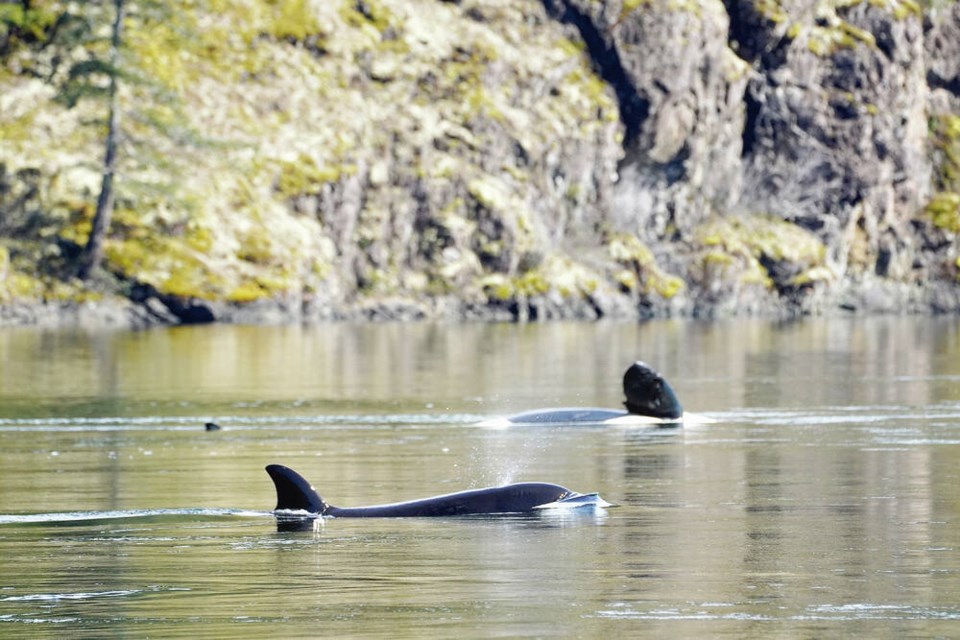Efforts to save a young orca that’s refusing to leave a lagoon near Zeballos ramped up Thursday as tide and weather conditions started to deteriorate.
It was the sixth day on its own inside Little Espinosa Inlet for the two-year-old orca, and tidal conditions were the best they’ll be for days for scientists and First Nations to herd the calf out of the shallows and through a small causeway opening to deeper waters.
About 10 vessels were inside the lagoon using playback vocalizations of other transient killer whales, okoimi pipes and long ropes with floats and lines in the lagoon.
The Department of Fisheries and Oceans said tides will not be optimal over the next few days, with the water becoming increasingly shallow. Tide levels are expected to improve next week.
The young orca, which has been named kʷiisaḥiʔis (kwee-sa-hay-is) or Brave Little Hunter, is refusing to leave the lagoon after its pregnant mother became beached and drowned last Saturday.
The health of the young orca is concerning to all, said the DFO, adding that the operation is highly complex and unfolding in challenging weather and in difficult geographic conditions.
“A successful outcome is not guaranteed,” the DFO said in an update Thursday.
Despite efforts to entice the orca out of the lagoon, it appears it remains reluctant to pass over a sand bar at the causeway and into deeper waters.
Ehattesaht/Chinehkint First Nation Chief Simon John said the situation is heart-wrenching.
“Its hard to know what people are thinking when they watch the news and see us working here,” he said Thursday. “All we know it that it is very hard and really emotional.
“This is Day 6 and we know that time is short and there is a lot of pressure.”
The DFO said it is planning for all possible options at this point, including capturing the orca live and taking it to deeper water.
“There are significant risks around utilizing more aggressive intervention methods unless deemed absolutely necessary as time passes,” the DFO said in a statement. “It would not be utilized until other options have been exhausted due to its complexity and potential risks to the calf and the responders.”
Scientists also said providing the calf with food — such as pinniped meat — poses risks. The dead beached whale was lactating so the calf was at least partially dependent on milk from its mother. Experts have not been able to determine if it can successfully hunt on its own, and feeding the orca could habituate the animal to humans, presenting future dangers.
Drone footage indicates that the calf is in good body condition. Based on other incidents with juvenile whales, the DFO estimates the calf could last a few weeks without eating.
John said if the teams are successful in moving the orca out of the lagoon, the next stage — reuniting it with a family pod — will present another set of challenges.
“When you get into the more open waters, the larger waters and the challenges all change, and things like weather will be a big factor,” he said.
John said First Nations members had a long meeting on Wednesday and then launched a canoe and started to drum and sing.
“We wanted to provide some comfort to kʷiisaḥiʔis and to see if she would follow the canoe,” he said. “It was really powerful seeing our people and guests on the water. They were there with purpose and with good hearts and even a rainbow came over the lagoon as the sun tried to shine.”



.png;w=120;h=114;mode=crop)
